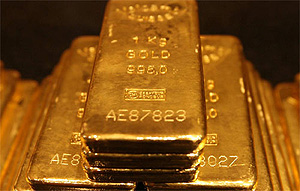Gold Bubble Seen by Soros on Brink of Bear Marketby Nicholas Larkin, Maria Kolesnikova and Debarati RoyBloomberg Dec. 29, 2011 |
Popular 
'We Own This Country': Mark Levin Says Pro-Palestine Protesters Should be 'Rounded Up and Deported'

Zionist Mob Attacks Pro-Palestine Protesters at UCLA While Screaming 'Second Nakba'

Israel-Ukraine $95B Aid Bill Includes Provision to 'Supercharge Mass Migration From the Middle East'

Trump Meets With DeSantis in 'Quest for Donors,' Calls for Protests to be Shut Down One Day Later

"I've Never Seen This Many Police": NYPD Launch Crackdown on Pro-Palestine Protesters at Columbia
  The deflationary narrative has been getting a lot of traction lately, with no overt QE3 being announced, not to mention the 10-year mark being passed, it seemed like a pullback was due. Frankly, only a 20% pullback at this point is not very significant. (see this chart) The deflationary narrative has been getting a lot of traction lately, with no overt QE3 being announced, not to mention the 10-year mark being passed, it seemed like a pullback was due. Frankly, only a 20% pullback at this point is not very significant. (see this chart)
I think the view that the Fed will continue expansionary monetary policy if the market falls too much is a more likely scenario than the market being allowed to have some sort of deflationary collapse, especially considering we're in an election season. Nothing has really changed when it comes to the massive debt expansion by governments around the world, though the question is where is all the money going to go, it doesn't *have to* go into gold, tons is going into treasures, for example. Personally, I'm not very worried about the price of gold unless Ron Paul wins the presidency. Of course, if I think there is going to be some sort of deflationary collapse and a massive dollar rally, I'll sell my gold and not be too ideological about it, after all, prices are entirely subjective. - Chris, InfoLibDec. 29 (Bloomberg) -- Gold is poised to complete its 11th consecutive annual gain, the longest winning streak in at least nine decades, on the brink of a bear market. George Soros, the billionaire who two years ago called it the "ultimate asset bubble," cut 99 percent of his holdings in the first quarter, Securities and Exchange Commission data show. Hedge fund managers John Paulson, Paul Touradji and Eric Mindich also sold bullion this year. While speculators in New York futures are the least bullish in 31 months, the median estimate in a Bloomberg survey of 44 traders and analysts is for prices to rally as much as 37 percent to $2,140 an ounce in 2012. The divergence of views is widening after prices declined 18 percent from a record close of $1,900.23 on Sept. 5, or 2 percentage points away from a bear market. As some investors retreated to cash amid a $10 trillion slump in global equity values since May, others bought more metal, taking holdings in exchange-traded products to an all-time high two weeks ago. Bullion's 10 percent gain in 2011 means it's on track to beat stocks, bonds and the dollar for a second straight year. "It's done its job this year of protecting investors," said Michael Cuggino, 48, who helps manage about $15 billion of assets, including $3 billion in gold, at Permanent Portfolio Funds in San Francisco and correctly predicted in February that prices would keep rising. "Gold has been all over the place. If you bought gold at $1,800 then you aren't too happy. Some people will get out of gold, but the longer-term investors will remain." Trading Partners Bullion was at $1,556.77 at 12:05 p.m. in Shanghai, below this year's average of $1,572.47 and six times more than when the bull market began in 2001. The MSCI All-Country World Index of equities declined 10 percent, on track for the worst year since 2008, and the Dollar Index, a measure against six major trading partners, advanced 1.9 percent. Fixed-income securities around the world gained 4.3 percent this year, the weakest performance since 2007, Bank of America Corp. indexes show. Investment in physical metal is cooling. The U.S. Mint's sales of American Eagle gold coins in November were the weakest since June 2008, data on its web site show. Holdings in bullion- backed ETPs fell about 40 metric tons since reaching a record on Dec. 14, according to data compiled by Bloomberg. They are still 135 tons higher than at the start of 2011 and the total of 2,320 tons, valued at $116 billion, exceeds the reserves of all but four central banks. Federal Reserve Demand had strengthened most of this year as Europe's debt crisis widened and the Federal Reserve pledged to keep interest rates near zero until at least mid-2013. The European Central Bank cut rates to 1 percent on Dec. 8, matching the record low of the euro era that began in 1999. That increases the appeal of bullion because it generally earns investors returns only through price gains. "The longer-term trends, mainly government fiscal and monetary policies, haven't changed," said Tom Winmill, who helps manage more than $200 million of assets from Walpole, New Hampshire, for Midas Funds and whose Midas Perpetual Portfolio may increase its 19 percent investment in bullion and gold mining companies in the next quarter. "Gold has that preservation-of-wealth role and was probably used quite a bit in the last several weeks." Options traders are also bullish, with the top nine holdings all betting on higher prices. The two most widely held contracts give holders the right to buy gold at $2,000 by the end of March and May, data from the Comex exchange show. Read More |



